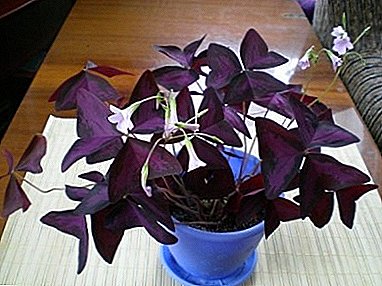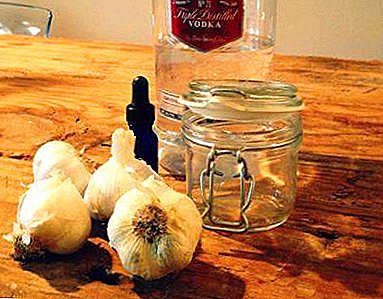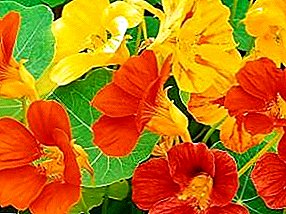
"Oxalis" or "Kislitsa" - this is the name of a popular houseplant. They called it so for the sour taste of its leaves, it is very similar to the taste of sorrel.
In the field of wild growth "Kislitsa" (Oxalis) is able to replace it, and representatives of the family grow on all continents, their 800 species, different in appearance but always with the green of sour taste.
In room floriculture "Violet Violet" is the most popular.
general description
Height is 20-25 centimeters, leaf stalks are long and thin, the leaf is three-fold in structure, the leaf color is uneven, each plant has a lighter or darker vein tone characteristic of it, central or marginal spots, with sufficient illumination the leaf color is rich and bright purple, lack Illumination introduces greenish tones in leaf color and purple color becomes less saturated.
The “Kislitsa” blooms all summer long with delicate flowers of white, pink or lilac hues, gathered in exquisite inflorescences, umbrellas, and the natural background of unusual leaves gives them a special charm.
Violet Kislitsy leaves are interesting not only for their color and shape, they are completely unique, at dusk they will fold to form something amazing, like a butterfly with folded wings, and in the morning the leaves will unfold and take on their usual form, for this simply fantastic property is called acidity "Madame Butterfly" or "Butterfly Flower".
A photo
The photo shows the plant "Violet Violet" with proper care at home:





Home care
Actions after purchase
 As a rule, in the flower shop we choose the most abundantly blooming, bright, for some time it retains its wonderful appearance, but over time you may find that the leaves are drying up, or the flowering has decreased significantly.
As a rule, in the flower shop we choose the most abundantly blooming, bright, for some time it retains its wonderful appearance, but over time you may find that the leaves are drying up, or the flowering has decreased significantly.
Do not worry, when growing for sale, the plant was stimulated to give it the best possible appearance and its strength was somewhat exhausted, just let it rest, get used to the new conditions.
If the plant began to lose leaves, which happens with the “Violet Kislitsa” (Oxalis) very rarely, cut them off - as a rule, they grow within 1 or 1.5 months. The flower from the store, as a rule, has a tight pot, as soon as the plant gets used to the new conditions, transplant it into a looser capacity.
Transfer
Replant the plant can be without damaging the root system, for some time, do not water it, and an earthen clod will dry out a little and easily leave its original place. A new pot should be 3 or 4 centimeters free, the capacity for growth should not be suitable, the young plant should be transplanted as it grows, and the adults once every 2-3 years.
Ideal for any plant is a ceramic pot, it is well breathable and humidity, but in its absence, suitable for transplanting and plastic container of the desired size and shape.
Pay attention to the holes in the bottom, they must be present, fill the bottom with broken shards or broken red bricks - this will not allow water to stagnate during watering.
Tip! Loosen the ground under the plant more often; it should always be loose. You can replant it from spring to autumn.
Watering
"Violet Violet" does not need frequent wateringas soon as the soil in the pot has dried the plant needs to be watered or sprinkled moderately, excessive moistening will lead to rotting of the roots and death of the plant, excessive moisture will cause fungal diseases.
Top dressing
Violet Kislitsa is fed during active growth and flowering with complex mineral fertilizer several times a month during the next irrigation.
Attention! Complex fertilizers have instructions, it indicates the dose of the drug, you need to halve it.
Lighting and temperature
 "Violet Violet" prefers well-lit places, but does not tolerate direct sunlight, shade the window so that the plants do not get sunburn, strong shading will make the plant dull, leaf stalks will stretch, which will have a bad effect on health and its appearance.
"Violet Violet" prefers well-lit places, but does not tolerate direct sunlight, shade the window so that the plants do not get sunburn, strong shading will make the plant dull, leaf stalks will stretch, which will have a bad effect on health and its appearance.
"Kislitsa" (Oxalis) does not tolerate heatoften suffers from overheating on closed balconies and loggias, it is good at temperatures up to 25 degrees. Draft plant does not like.
Growing in the garden
In spring and summer, flowerpots and pots with “Kislitsa violet” can be placed in the garden, the plants feel great. These original plants allow you to embody the most daring landscape ideas. "Kislitsu" can be placed in the garden not only in pots, pots and containers, but also planted in the spring in open ground, the plants root well and bloom after 1 or one and a half months. In the autumn, the plants need to be dug, they will not survive the winter even when harboring ...
Attention! When placing Kislitsy in the garden, avoid places with direct sunlight.
Preparing for the winter
Autumn need to reduce watering., cancel spraying and dressing. The winter temperature for the “Kyslitsy” is necessary sparing - 16-18 degrees of heat, at a temperature of less than 10 degrees the plant dies.
"Purple Violet" does not dry the leaves for the winter, but under adverse conditions, the leaves can dry out, they should be cut, by spring new shoots will appear. In the spring, the plants are watered more often, they are fed with complex mineral fertilizers, the plant begins to actively grow and blooms.
Breeding
"Purple Violet" is propagated by seeds, cuttings, bulbs. The seeds of the “Kislitsy” (Oxalis) are sown on the wet surface of the soil without embedding, the box is covered with glass and placed in a warm place, with the appearance of shoots it is rearranged to light, the grown seedlings dive, the grown plants are planted in a permanent place.
Bulb reproduction is the most common. They are planted immediately to a permanent place of 8 or 10 pieces in 1 pot. "Kislichka" in a single planting plant is gentle, fragile, for greater effect is used planting group.
The video contains recommendations for breeding "Violet Sis" at home:
Landing
 Ceramic pots are ideal for planting.They meet all the requirements - they are environmentally friendly, they let in moisture and air well, they are beautiful, but if they are not present, you can plant the “Sour” in a plastic pot, it does not allow air and the soil under the plant should be loosened more often.
Ceramic pots are ideal for planting.They meet all the requirements - they are environmentally friendly, they let in moisture and air well, they are beautiful, but if they are not present, you can plant the “Sour” in a plastic pot, it does not allow air and the soil under the plant should be loosened more often.
Be sure to arrange a drainage layer of broken red bricks or broken ceramic pots at the bottom of the pot.
The soil for Kyslitsy is light and fertile, you can buy it in the store, but if you doubt the quality of the finished substrate, prepare it yourself from peat, garden soil, humus and sand, taking them in equal parts.
Diseases
"Violet Violet" (Oxalis) practically does not get sick, but with excessive watering, fungal diseases may develop, if they have been noticed, reduce watering, remove the diseased parts of the plant, and in case of severe damage, destroy the plant.
Pests
"Kislitsa" (Oxalis) is affected by pests, in the event that you have found an aphid, a shield, a worm or other harmful animals - do not be discouraged, buy a remedy for pests of houseplants, process "Kislitsu" taking into account the recommendations in the instructions.
Many nations consider “Kislitsu” (Oxalis) as a plant bringing happiness into the house, they donate it for the New Year, calling it a lucky clover, among the Irish people the trefoil “Kyslitsy” is a national symbol and adorns the national emblem.












